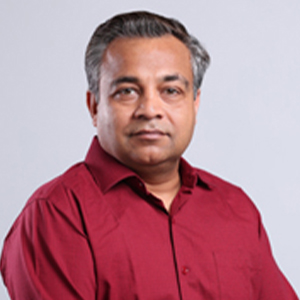Aligning Education & Technology to Foster a Tech-powered Learning Culture

In an interaction with Higher Education Review Magazine, Pushpendra Singh, Professor, Indraprastha Institute of Information Technology, shared his insights on various aspects of the recent technological innovations in the field of Education and their impact on the learning experience, What will be the role of artificial intelligence and virtual reality will in the future of education, what ways does higher education improves student abilities and broaden their prospective towards surroundings and more.
The term Education can never be defined in limited words as it is a broader concept than just reading, writing or teaching, and often holds different meanings for different professions. However in a compressed manner one can define education as an essential aspect of life that empowers individuals to make informed decisions, improves their living standards, and helps develop society as a whole. It is no secret that technological revolution has certainly transformed industry verticals and has taken the world by storm, and education sector is not an exception. Unexpectedly, COVID has contributed a lot toward this transition by integrating digital technologies in learning , which have significantly changed the education landscape and brought both teachers and students into a brave new world of blended and distance learning. Gone are the days of One-size-fits-all education. With educators recognizing the value of personalized learning, embracing innovation, fostering critical thinking, and nurturing love for learning,education became a beacon of empowerment, shaping generations that are prepared to face the challenges and seize the opportunities of the future.
Regardless of a developed or developing economy, when the success of students and positive outcomes for families, communities, and society as a whole is concerned, educational leadership slips into the frame and play a significant role. One such industry leader who is leading the change in education from the front end is Pushpendra Singh, Professor at Indraprastha Institute of Information Technology, Delhi. Below is an excerpt of his thoughts, let’s hear it from him.
Shed some light on your teaching philosophy and watch strategies do you employ to foster a collaborative and inclusive learning environment?
Fostering a collaborative and inclusive learning environment requires careful planning, consistent effort, and a commitment to creating a space where all individuals feel valued and empowered with equal opportunities, and these all takes certain teaching philosophy. One such dynamic philosophy is active learning. It is an educational approach that emphasizes student engagement and participation in the learning process. It involves strategies and methods that encourage students to take an active role in acquiring knowledge and skills, rather than being passive recipients of information. Active learning is based on the idea that students learn better when they are actively involved in the learning process, rather than simply listening to lectures or reading textbooks. Incorporating active learning techniques in pedagogy not only creates enriching educational experience but also promotes deeper understanding, critical thinking, and practical application of knowledge.
Brief your views on recent technological innovations in the field of Education and their impact on the learning experience?
The last decade has witnessed numerous technological innovations in education zone that helps foster a flexible, personalized, interactive, and accessible learning experience. However, the one thing that avidly bridges the gap between each learner of 21st century and technology, is mobile phones. Mobile phones have significantly transformed the landscape of education and learning. Their portability, accessibility, and versatility have opened up new opportunities for both formal and informal learning. Also, there is a plethora of educational apps available for mobile phones that cover various subjects and skills. These apps offer interactive and engaging ways to learn, allowing students to grasp concepts through gamification and multimedia. Another most crucial aspect that lies in the heart of holistic learning is demo based education. Now, a range of animation demos are available in the market that provides visual representations of abstract concepts, making it easier for students to understand complex ideas that might otherwise be challenging to grasp through text or verbal explanations alone. It not only converts regular syllabus into interesting concepts but also opens up new aspects of grasping knowledge.
What will be the role of artificial intelligence and virtual reality will in the future of education and how do you think technology can enhance the teaching and learning experience?
Undeniably, technologies like AI and VRhave significantly transformed the field of education, revolutionizing the traditional way of both gaining and offering knowledge. Bearing immense potential to enhance education, AI powered tools and strategies are more likely to disrupt the normal way of teaching, not only in India but worldwide. With AI, educators can personalize learning, improve student outcomes, and better prepare students for success in this digital age.And, when it comes to Virtual Reality or VR, it is still in the testing phase primarily because these virtual reality headsets are still very expensive. Despite, VR has gained significant attention in the field of education and learning due to its potential to provide immersive and interactive experiences that can enhance the learning process. As technology advances and becomes more accessible, both AI and VR in learning are likely to continue evolving and playing a bigger role.
In what ways does higher education improves student abilities and broaden their prospective towards surrounding?
Higher education shaping students is a dynamic and multifaceted process.While primary education equips students with strong fundamentals, higher education helps ace the gap between learning and practicality. For example,students learn calculus in their time control but finally when theyget into the graduate school, there they realize the actual use of calculus and how the physics is actually being used. So, higher education connects the dot between whatever welearn and where and when we need to apply it.

